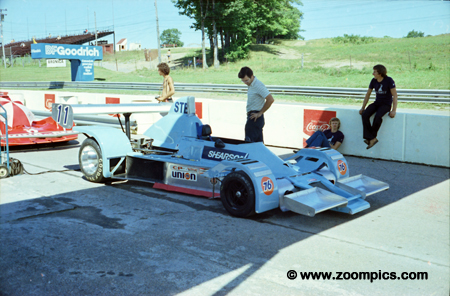|
|
|
Oct 18, 2016 17:19:48 GMT
|
I was looking around for some other things earlier and came across this : 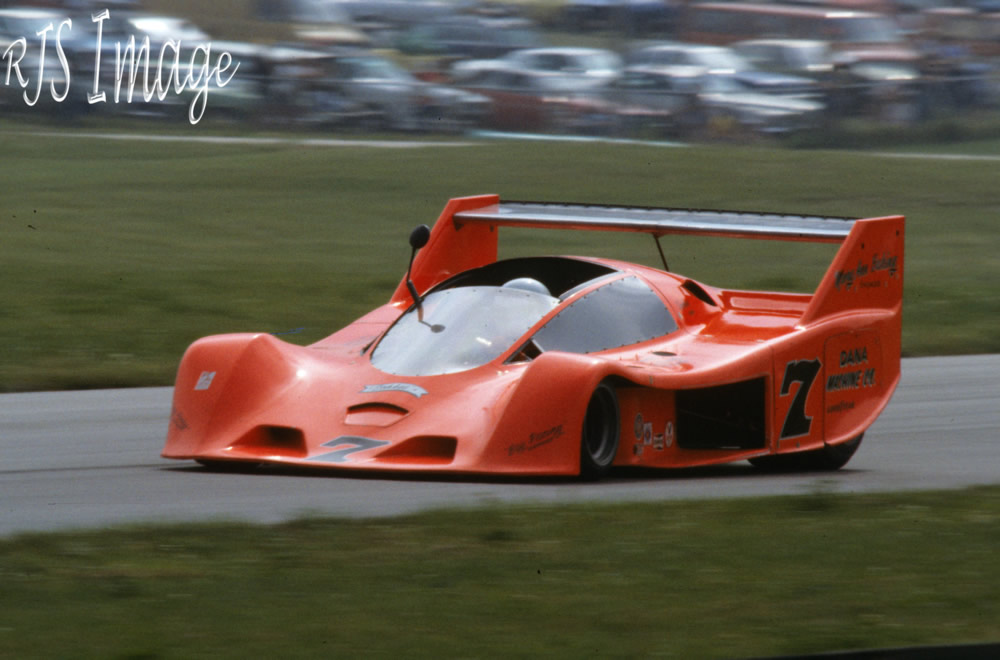 Bit of googling and I found it was called the Schkee DB1 raced by Tom Klauser It was a rebodied Lola T332C which looks like this : 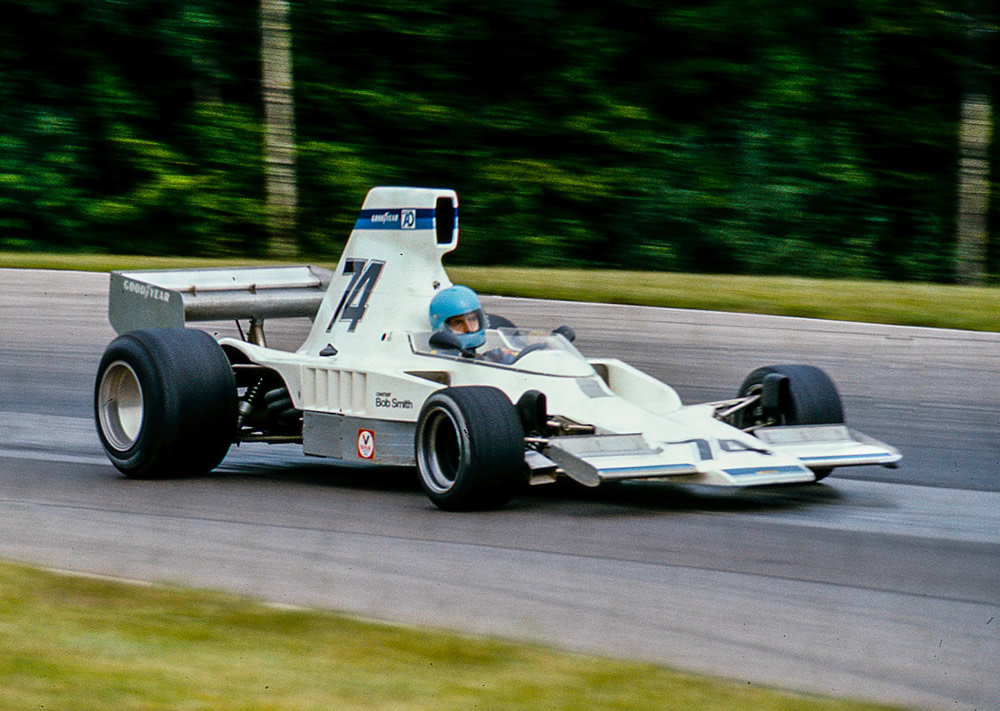 So basically an F5000 car with more body work. Crazy thing.  |
| |
Last Edit: Oct 23, 2016 20:07:37 GMT by HoTWire
|
|
|
|
|
|
|
Oct 18, 2016 20:10:21 GMT
|
|
It looks like a pink panther / matchbox superfast toy car. Really cool.
|
| |
|
|
|
|
|
Oct 18, 2016 21:02:44 GMT
|
|
Neat.
Will we ever see a racing series the likes of Can Am again?
|
| |
|
|
|
|
|
Oct 18, 2016 21:07:38 GMT
|
I like the looks of that! Another car in the series with visual impact was the shadow.  |
| |
 Click picture for more |
|
markbognor
South East
 
Posts: 9,970
Club RR Member Number: 56
|
|
|
|
|
|
| |
|
|
Colonelk
Posted a lot
  
Posts: 3,742
Club RR Member Number: 83
|
|
|
|
I like the looks of that! Another car in the series with visual impact was the shadow.  Those inlet trumpets!     |
| |
|
|
Darkspeed
Club Retro Rides Member
Posts: 4,878
Club RR Member Number: 39
|
|
|
|
The real innovators of Can-Am were the Jim Hall Chaparral team who really pushed the boundaries. MacLaren dominated the series with the 6P's Porsche then turned up and just redefined the word power. I think that Shadow had to have the front tyres clamped to the rims - they were so small in diameter they would be spinning so fast they would lift off the rims. My fave of all time the 2J  |
| |
Last Edit: Oct 20, 2016 9:57:53 GMT by Darkspeed
|
|
markbognor
South East
 
Posts: 9,970
Club RR Member Number: 56
|
|
Oct 20, 2016 10:03:33 GMT
|
|
|
| |
|
|
hak074
Part of things
 
Posts: 446
|
|
Oct 20, 2016 10:56:47 GMT
|
That Shadow is just mental! But that's a good thing. The other Can Am cars looked like race cars. The Shadow is a go kart with a massive V8 strapped to the back of the driver! And love how the driver is all poking out the top exposed. Just looks insane compared to how the current F1 drivers are all tucked away. Totally awesome madness  |
| |
|
|
|
|
|
Oct 20, 2016 13:17:44 GMT
|
|
The first one could almost be a 60s Ed Roth style show car with a splash of metalflake and chrome wheels etc. Or even an alternative Bat-mobile. Probably says more about the way my mind works in regard to cars.
|
| |
|
|
|
|
markbognor
South East
 
Posts: 9,970
Club RR Member Number: 56
|
|
Oct 20, 2016 13:38:45 GMT
|
The Single-Seat Can-Am (1977-1986) The original Can-Am, rightly regarded as one of the high points of post-war sports car racing, collapsed in 1974 after two dismal seasons. It had been largely eclipsed over those two years by the Formula 5000 series, also organised by the SCCA (Sports Car Club of America) but catering for 5-litre single-seaters. The F5000 series continued to draw some of the biggest names in racing but also stagnated in the mid-1970's, partly due to its domination by British manufacturer Lola. The SCCA thought they could fix the problems of F5000 and also revive the much-missed Can-Am by effectively combining them. They scrapped F5000 and introduced a new Can-Am for 5-litre single-seat sports cars. So everyone slapped a sports car body on their F5000 Lola and continued as if nothing had happened. The first couple of seasons were a bit shaky but the series blossomed in 1979 and had three great years with landmark cars such as the Lola T530, the March 817, the VDS and the Frissbee. .... Can-Am 1977 Formula 5000 had been a success by most standards but race promoters were pressing the SCCA to restart the Can-Am series, which had been North America's main road racing series in the late 1960s and early 1970s. They couldn't both be accommodated so the SCCA's Burdie Martin and Lola importer Carl Haas effectively merged the ideas; their new Can-Am allowing single-seater 5-litre sports cars to run alongside the expected new cars. The only new cars in 1977 were conversions of the F5000 Lola T332 series, including the striking Schkee design. To the delight of race promoters, Tom Klausler won the opening race in the Schkee but thereafter more straightforward Lola conversions won every race. Carl Haas Racing won six and might have won more had lead driver Brian Redman not been injured when his Lola T332CS flipped over at the opening race. Redman's replacement, Patrick Tambay, easily won the championship. Haas Racing's main rival was VDS for whom Peter Gethin won at Road America. Cut and paste from here: www.oldracingcars.com/canam/ |
| |
|
|
markbognor
South East
 
Posts: 9,970
Club RR Member Number: 56
|
|
Oct 20, 2016 13:47:19 GMT
|
1969 AVS Shadow Mk1 ‘Lowline’ The first AVS Shadow was this lowline prototype built for the 1970 Canadian-Amercian (Can-Am) challenge. It was unusually low and captured the attention of Road & Track who put it on their cover and called it the “most radical Can-Am yet”. Others have called it the ‘go-kart’ or ‘roller-skate’. The car’s creator, Don Nichols called it “the two dimensional car.” Pete Lyons wrote “The car is hard to believe even when seen, so tiny is it – literally knee-high. It all depends on the minute Firestone tires, which have 11ins and 16ins footprints but are mounted on wheels 10ins and 12ins in diameter.” Don Nichol’s started Advanced Vehicle Systems Incorporated with the sole intent of winning the Can-Am. He had designer Trevor Harris design the first car which became known was the Mk1. It used 10×11 inch wheels up front and 12×16 wheels in the rear to achieve a low stance. The idea was to have a severely reduced frontal area to maximize top speed potential. This setup unfortunately left little room for much more than the engine. For instance, the suspension travel was severely limited, forcing the use of small wishbones and triple mini-springs. The brakes were machined down to an eight inch diameter, and required special active cooling to pull air from the area. The driving position was cramped and required the driver to straddle the horizontal steering column and use 45º pedals. Just behind the driver was a huge big-block Chevrolet engine with massive intake plenium that dominated the cabin. There was no room for a clutch so that was relocated within arm’s reach and only used for starting. Another problem was gearing, so a special Hewland LG600 was built that could withstand clutchless shifts and also included a custom gear set to deal with the small tires. It had enough strength to deal with Chevrolet’s potent all-aluminum ZL1 engine with over 600 bhp on tap. Many different engines were built-up for the Shadow included the production L88 and each was fitted by Fred Larsen with a custom oil scavenger and pan to reduce engine height. The chassis was built from box-sectioned aluminum and the body was thin unstressed Fibreglass. Many of the box sections of the chassis were removable and modular for ease of repair. Two 90 liter fuel tanks formed part of the chassis on either side of the engine. Work began on the first car in the middle of 1969, but the final specification wasn’t ready until the season opener at Mosport in 1970. Later the car received a massive integrated rear wing that increased the height of the car substantially. Despite a theoretical top speed of 250 mph, the Mk1 was relative failure on the track, with overheating being a main issue. George Follmer should be well credited for driving such an avant garde and powerful car. From here: www.supercars.net/blog/1969-avs-shadow-mk1-lowline/I wonder what sort of crazyness these guys would have been up to if they had more modern composites like carbon fibre and kevlar. |
| |
|
|
markbognor
South East
 
Posts: 9,970
Club RR Member Number: 56
|
|
Oct 20, 2016 13:56:09 GMT
|
|
|
| |
|
|
|
|
|
Oct 23, 2016 20:09:07 GMT
|
|
|
| |
|
|
|
|
|
Oct 23, 2016 20:14:37 GMT
|
The real innovators of Can-Am were the Jim Hall Chaparral team who really pushed the boundaries. More Chaparral 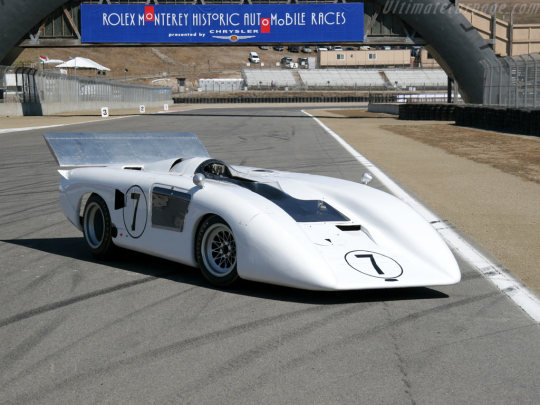   |
| |
|
|
Darkspeed
Club Retro Rides Member
Posts: 4,878
Club RR Member Number: 39
|
|
Oct 23, 2016 22:06:04 GMT
|
And this is the front of one of the most successful Can-Am Cars - the car blamed for ending the series. 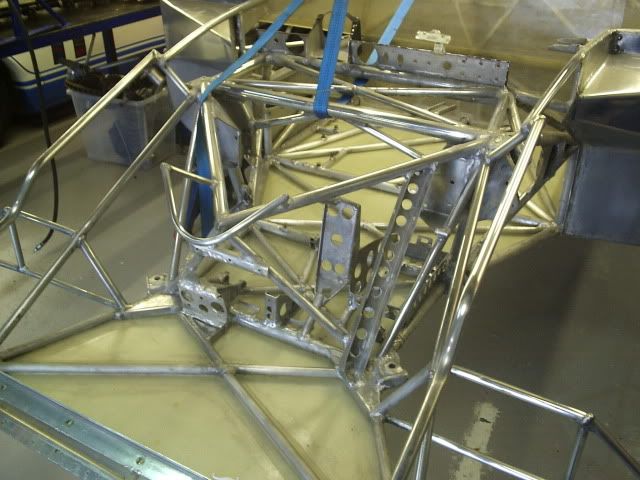 How drivers got into these things - The tubing is alloy and the engine 1500BHP !
|
| |
|
|
|
|
|
Oct 24, 2016 14:09:13 GMT
|
|
I was always a big fan of the Jim Hall Chaparrals, the first cars to use a big wing to any serious effect! The wing angle was controlled from inside the cockpit by a pedal where the clutch would have been, Chaparrals had automatic transmissions to make this possible. The 2J or "Hoover" was Jim Hall's response to having his big wings outlawed for giving him an "unfair advantage"!!!! The fans on the 2J sucked air from under the car to give a ground effect and had separate engines to drive them so as not to steal power from the motor that drove the wheels!
Jim Hall is another "Legend" so far unmentioned in the other thread on here, a great innovator in design and a fearless driver, the shape of almost every race car today originates with him.
Steve
|
| |
|
|
zipgun
Part of things
 
Posts: 109
|
|
Oct 24, 2016 14:19:05 GMT
|
|
|
| |
|
|




































